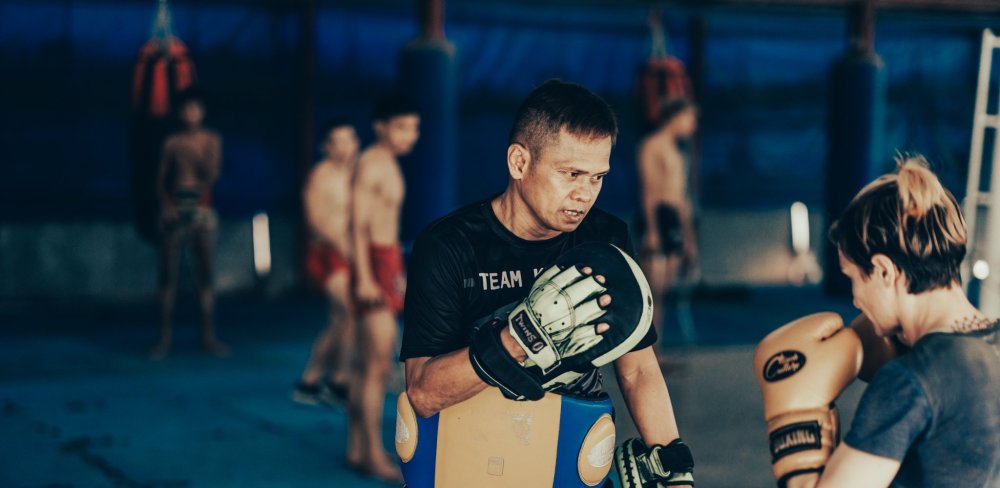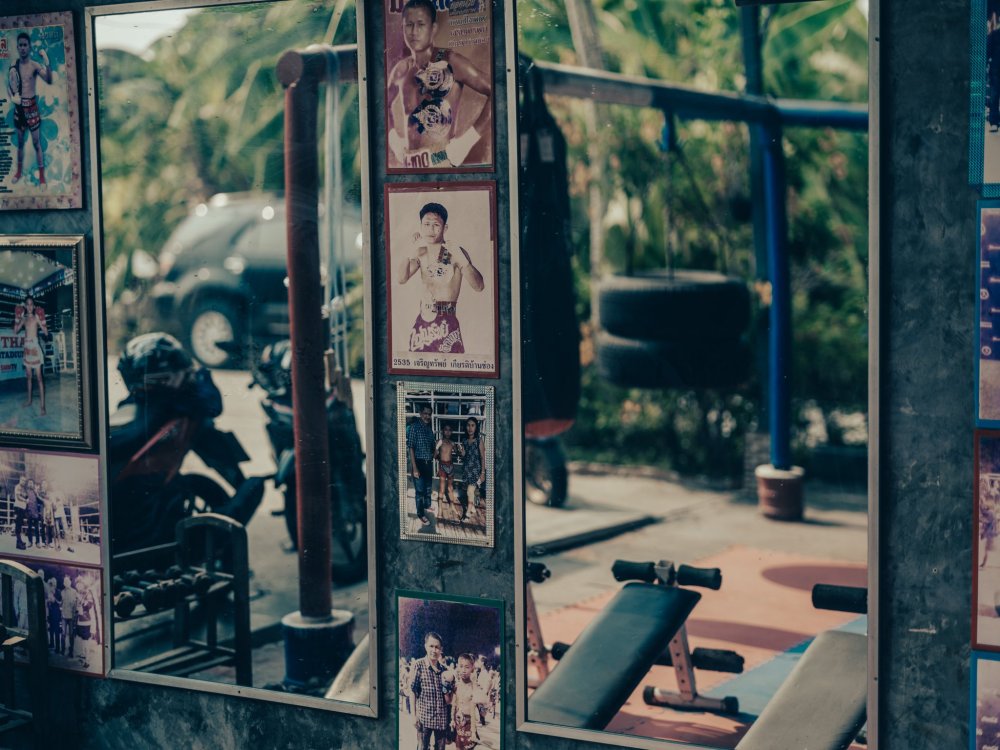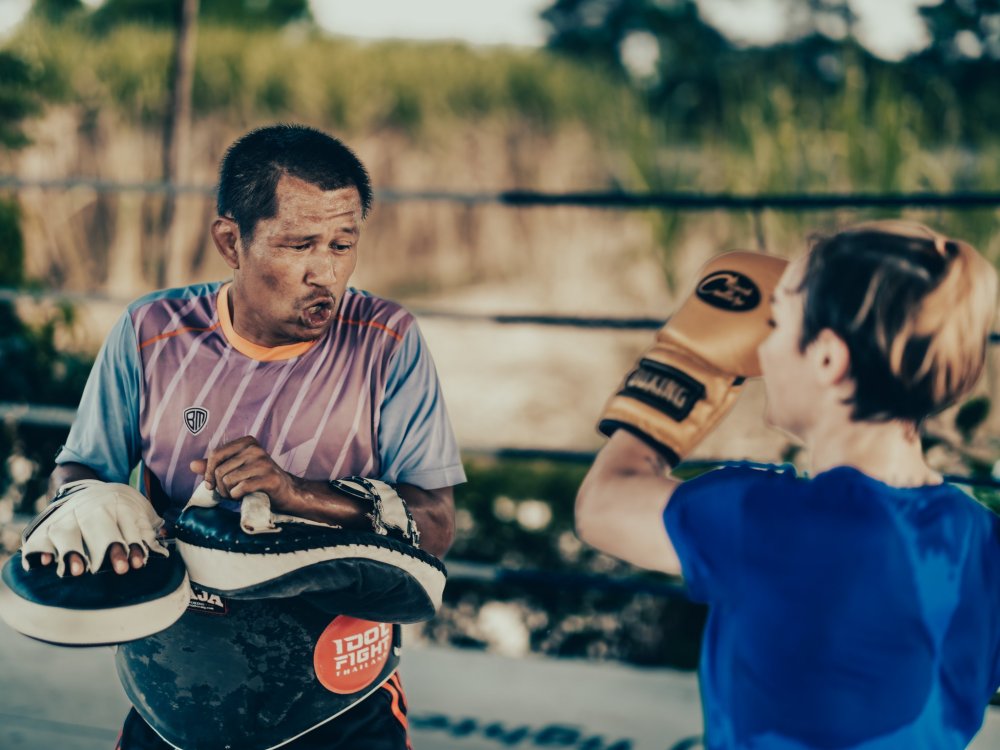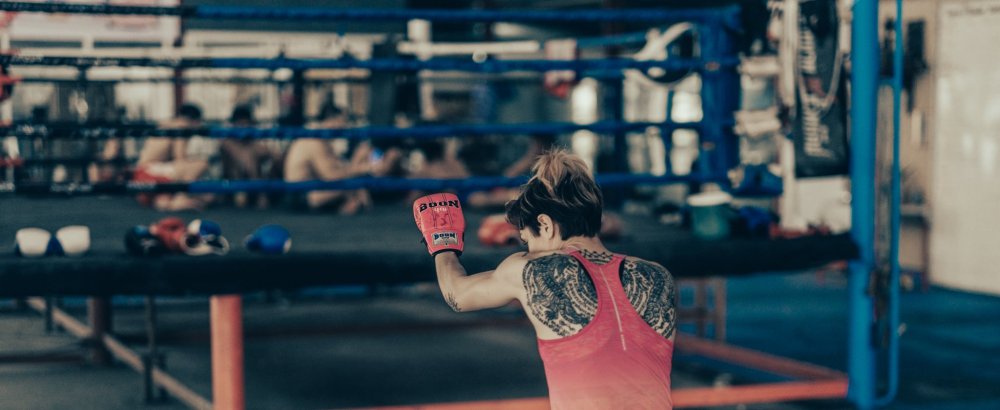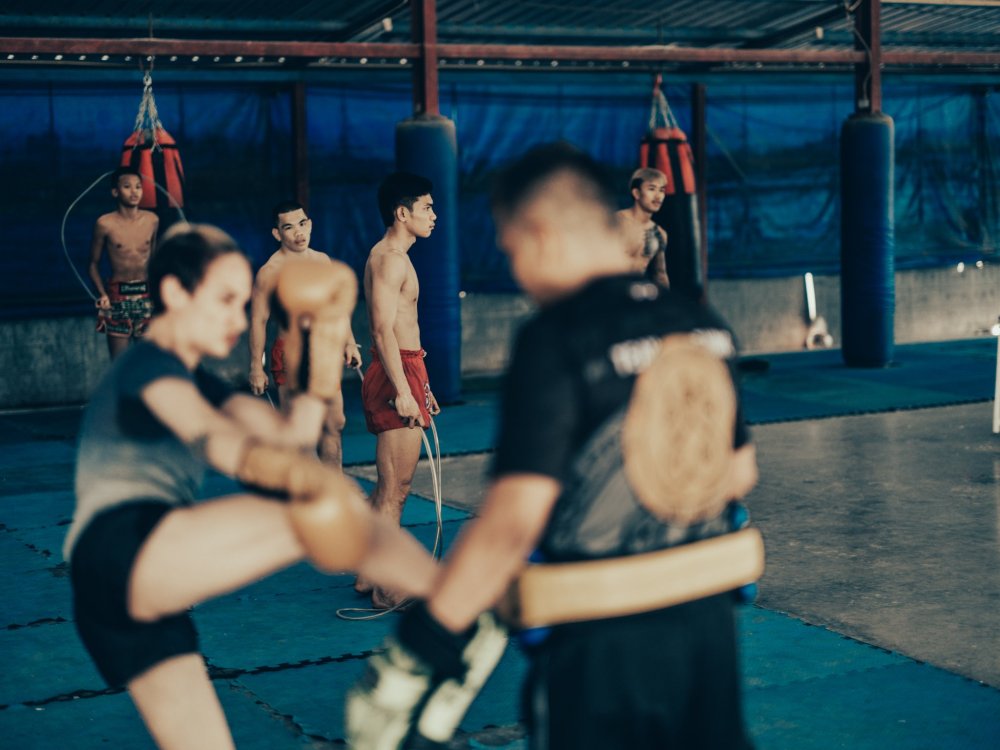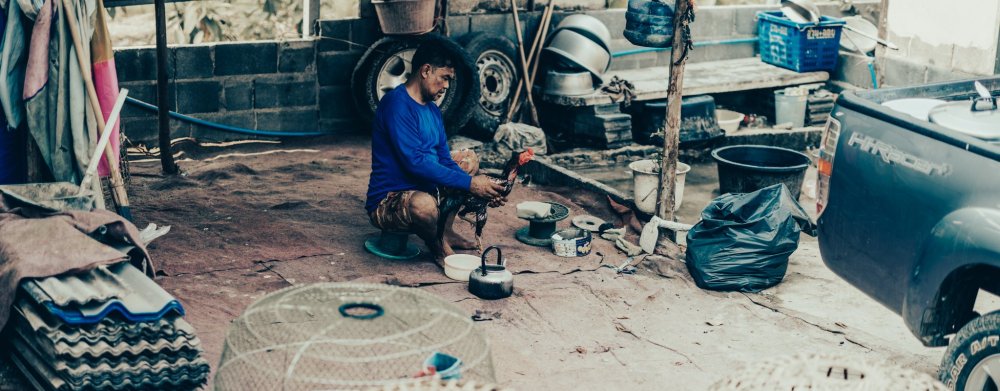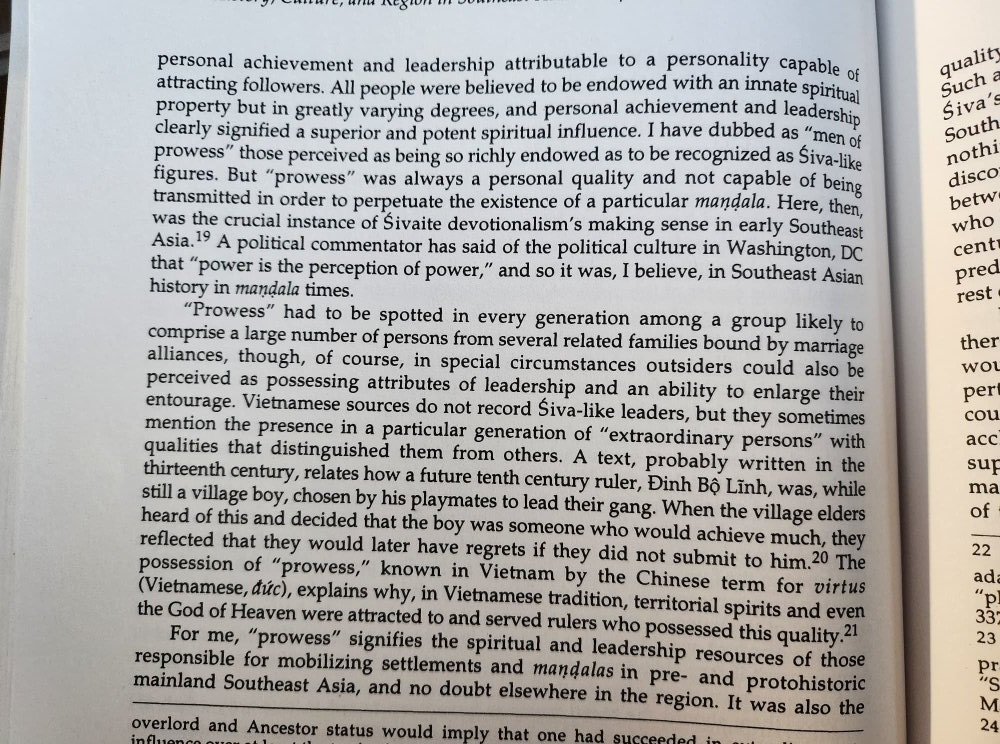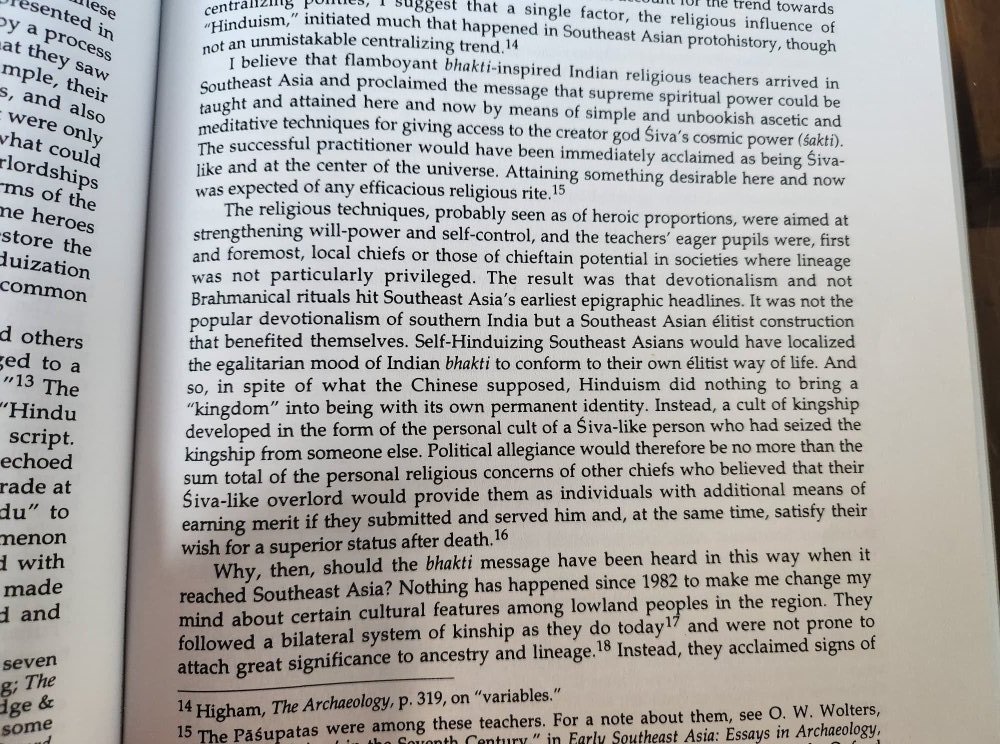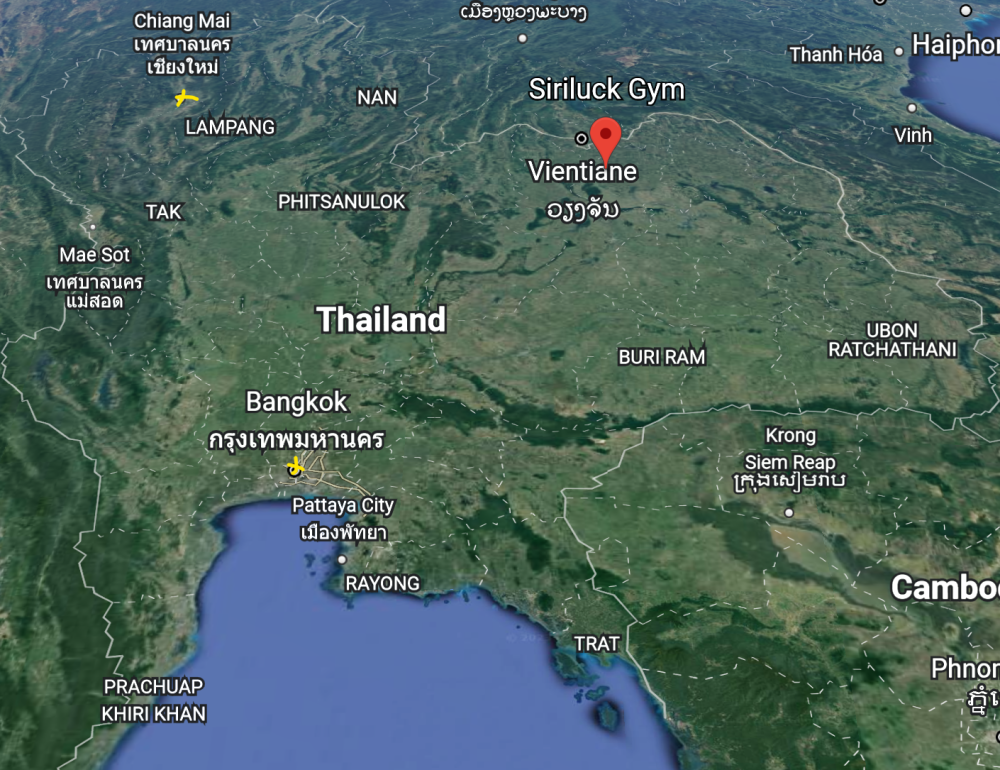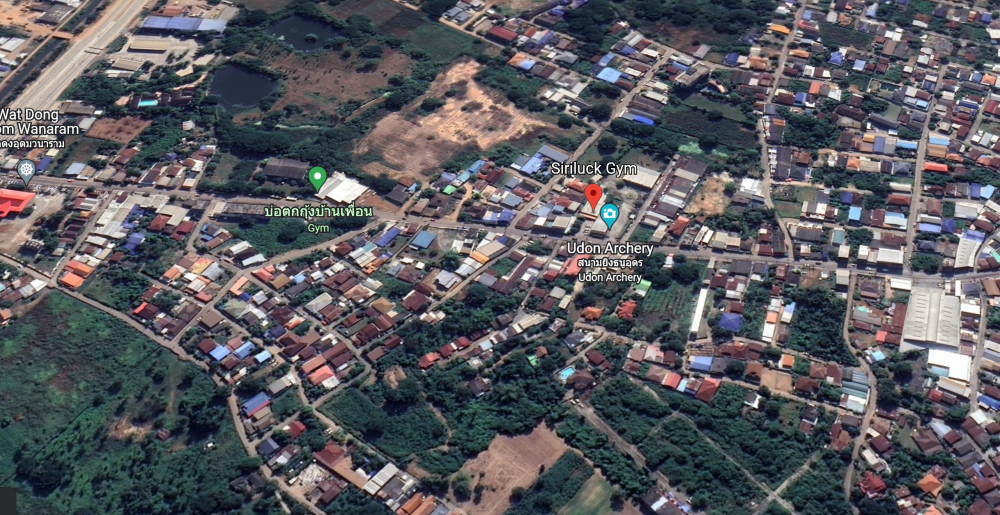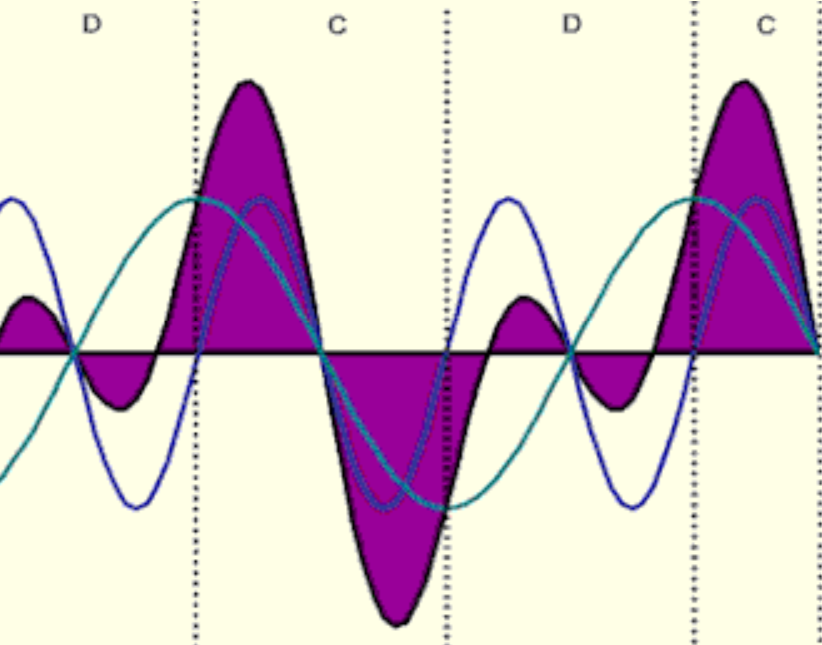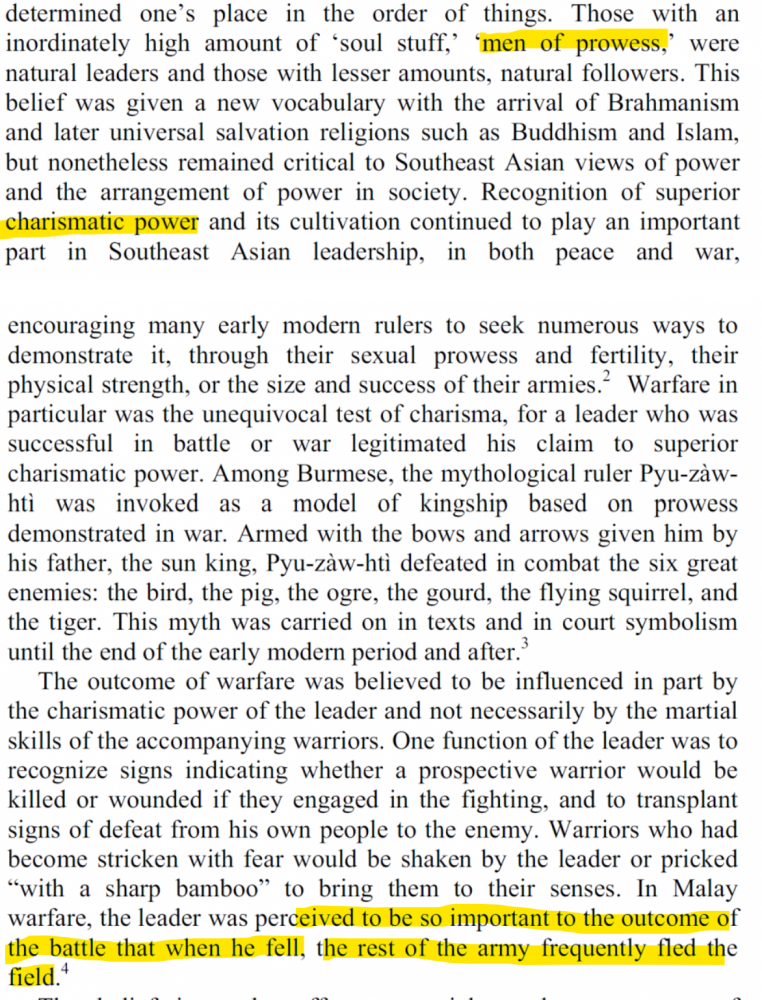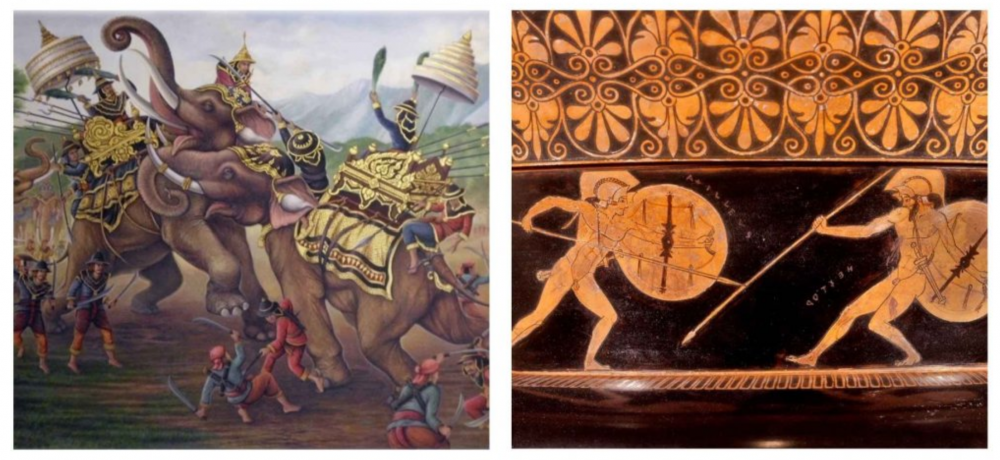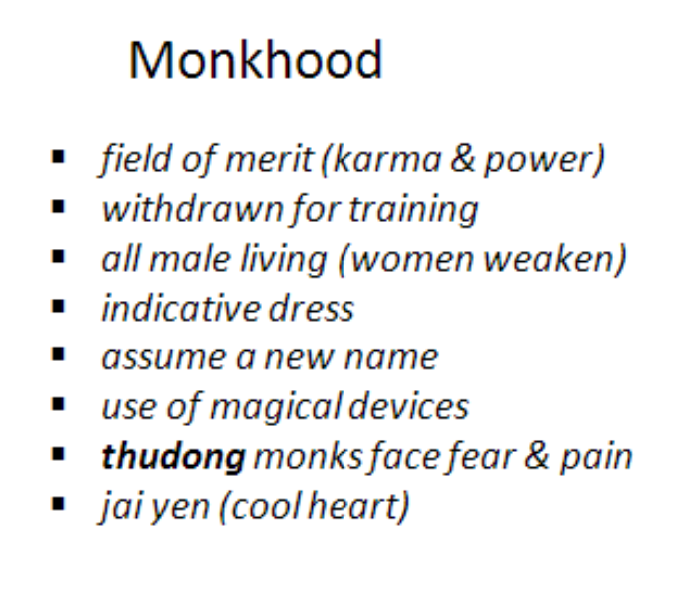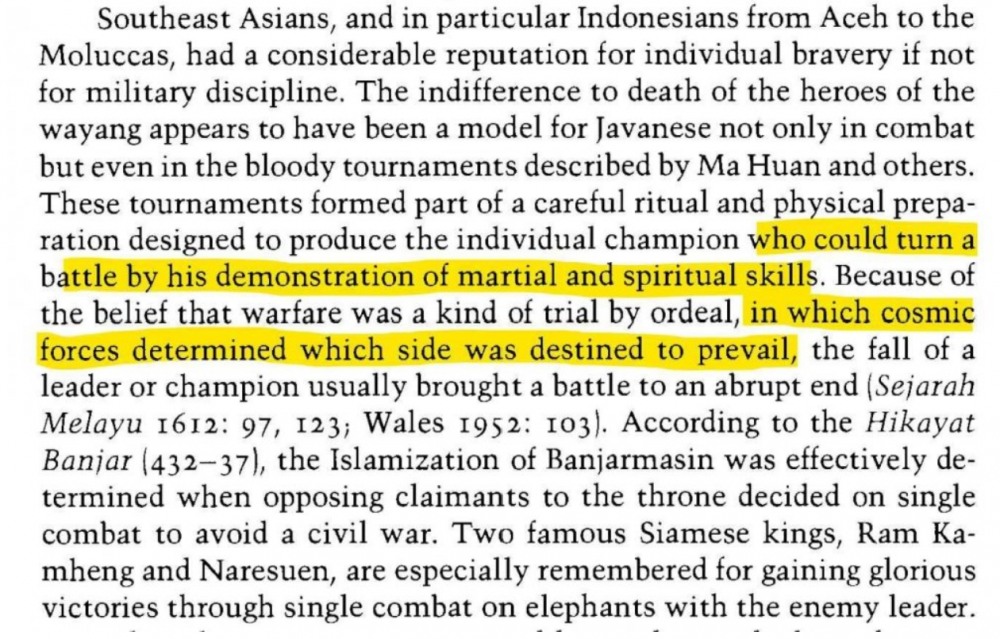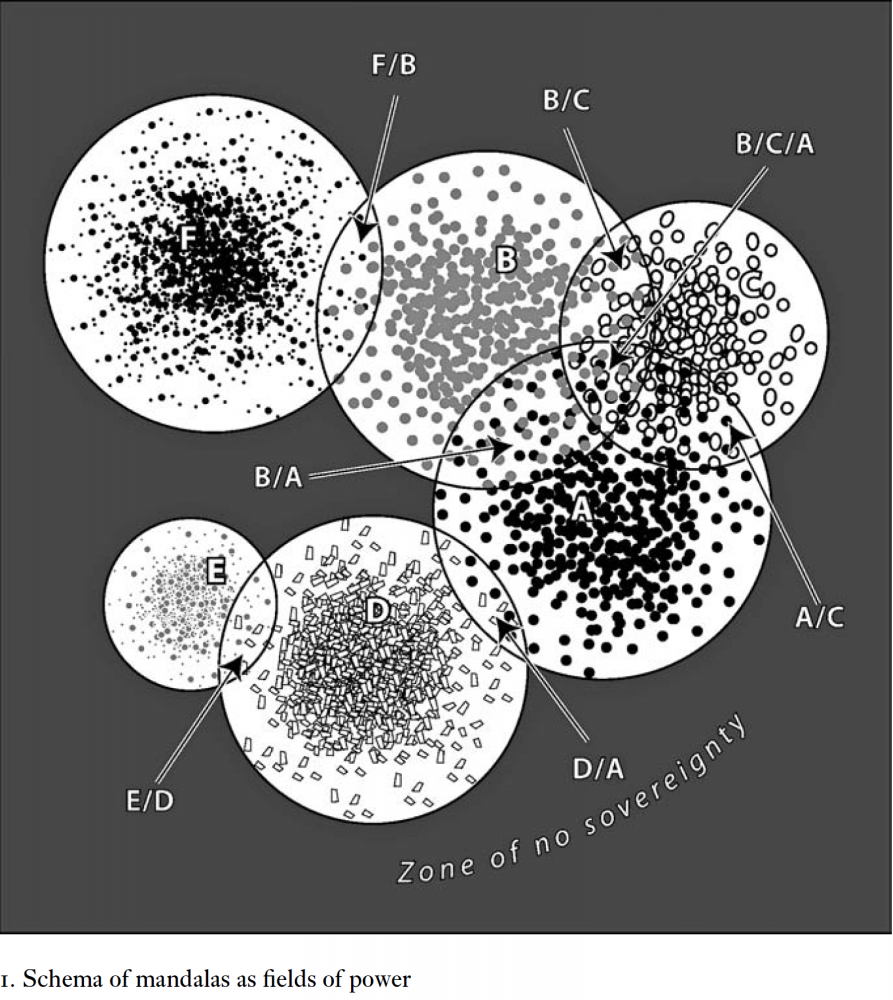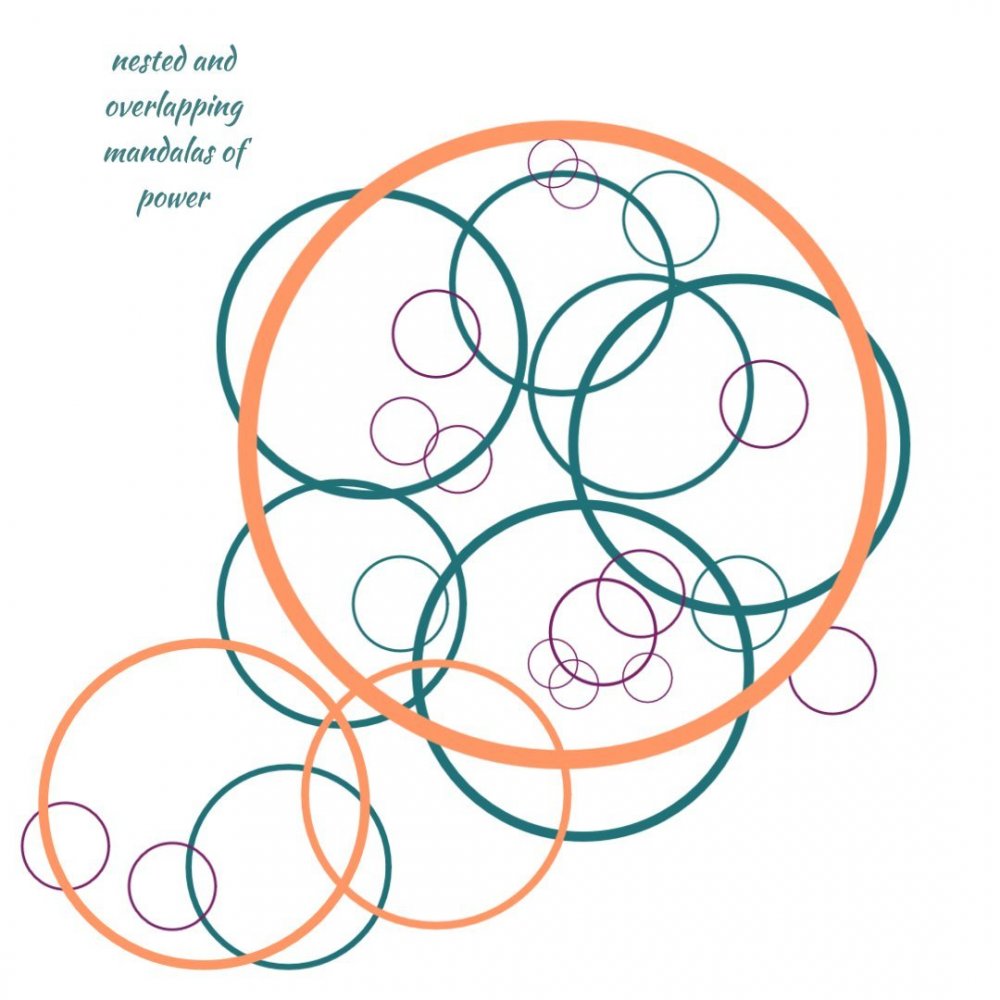-
Posts
2,264 -
Joined
-
Days Won
499
Everything posted by Kevin von Duuglas-Ittu
-
In small circles I've been noted as a critic of ONE Championship, and Entertainment Muay Thai in general, mostly on the grounds that I have real concerns that the market forces at play are going to erase some very hard-won qualities of Thailand's Muay Thai, and the fighters of Thailand, that made it and them unlike any fighters in the world. In fact, the best fighters in the world. As market forces come to bear - whether it be the declining demographics of stadium Muay Thai enthusiasm within the country (crushed by the popularity of football/soccer for instance, or the pressing need for new modes of fight entertainment content, throughout the world - it may very well be that all the things that made the "magical", "untouchable" Thai fighter possible, will fade and eventually be extinguished. The market may make Thai fighters like all the other fighters in the world. And, in the longterm...the longterm, this may undercut not only the specialness of Thailand's Muay Thai, but also its real economic value. That uniqueness is the thing that brings tourists from all over the world...to Thailand. Thais train like nobody else, they fight like nobody else, they perform like nobody else. That's my general position of concern. But in this piece I'd like to offer arguments on why ONE actually deserves recognition. In part I want to do this because I see this question as complex, and some see my thinking on this as simplistic. As maybe nostalgic. Or idealistic. The problems of Thailand's traditional, stadium Muay Thai have felt intractable, and in some sense doomed to gradual decline that cannot be slowed. In many respects ONE's entrance into Thailand is perhaps the only thing that could have interrupted this erosion. It may have negative unintended consequences, but the insertion of big, organized, global-eyed investment is very significant. Big Bosses Part of how I come to see this is just in regards to how power is organized in Thailand, in a systematic sense. What follows is just very broad brush, and not meant to be a reduction of sociability in Thailand. It's a kind of internal logic though, I believe. From street corners, to neighborhoods, to local industries up to governance there is a Big Boss structure to things. A Big Boss is someone who has social alliance formed of a network of people, often tied by deep cultural custom or more, a person with social gravity, but who also takes care of those below him (her). A Big Boss can show his affluence and his blessedness (his due position) through his generosity, or at the very least his capacity to create stability and opportunity. Within their field or sphere Big Bosses are respected by culture. Big Bosses stack all the way down. There are bosses below bosses, and bosses above bosses, and there is a kind agonistic struggle over social territory between bosses, which holds the whole thing together, but also generates innovation or activity. In this sense, the various Big Bosses of Thailand's stadium Muay Thai, as it presently was constituted, as they struggled over the decreasing scraps of Thailand's Muay Thai - with a shrinking demographic and talent pool of fighters - were never going to actually solve the problem of erosion. They instead were going to struggle for position over a declining resource. It was only from outside this agonism that any possibility would come. And that meant the insertion of a VERY Big Boss. That's what ONE has done. It's entered the Big Boss arena with a very big economic stick. Not only did ONE wrap itself with the signatures of Big Boss-ism (important value declarations: we are just trying to take care of poor, neglected fighters; we are just trying to save Muay Thai) it came with an open checkbook. It could pay enormous bonuses, inflated fight pay, and hook fighters up to an already matured advertisement hype machine. It was a very Big boss. It's much more complicated that this, as the State (the military) already had made moves to change Muay Thai by extracting Lumpinee Stadium from Muay Thai promotional culture, with visions of it becoming an international sports venue, and because the State has a powerful mission to develop the "soft power" of Thailand through the celebration of its national sport, I'm leaving that aside. At a certain level what is happening in just an International Big Boss has entered into the local Big Boss fray, and we are seeing an enormous social and political reaction to this. But my view is, it had to happen in this way. The Bosses of Muay Thai would never have been motivated enough to bring the kinds of changes that were necessary to more or less "save" a dwindling resource. A big, deep pockets Boss had to make a splash. Small Screens But, there is a much more significant thing happening with ONE that Thailand's Muay Thai was going to have a hard time dealing with, no matter its possible future. And this regards Muay Thai consumption itself. One of the big struggles with trying to preserve Thailand's Muay Thai excellence, its peak beauty (and rarity) is that Muay Thai essentially, is an in-person theatrical event. If you want to create an analogy, historically like a "play" and not like a movie or a tv show. The excellence of the sport, the very high skill-levels that Thai fighters have reached, in particular of the Golden Age, came out of its "theatrical play" nature. And the audience of this play is deeply invested in what the actors of the play are doing because they are betting. And betting, in the history of the culture, goes beyond just trying to get money. It has expressed social bonds and commitments, can have karmic interpretations, can be used to display social power, or personal gravity. It, at least historically, is a rich bond. So, when festival fights are going on, and betters/audience is pressing up against the apron and shouting, this is a full and powerful social dynamic. And the fight itself is an in-person theatrical performance (of skill, qualities, knowledge). A play is going on. Muay Thai excellence, all of its techniques and qualities grew out of this matrix of live (bet-on) performance, from the smallest ring in Isaan all the way up to Lumpinee Stadium in the 1990s. It's all live theatre. Thais were fans of Dieselnoi in the 1980s having never seen him fight, and only having read about him. Everything was a theatrical play you had to come to see. And the fighters developed advanced skills and qualities for that live audience. Like in theatrical acting you needed to be visually distinct, you needed to project and reach the back row with dramatic expression. Principles of ruup, the development of a fighter's silhouette (see Sylvie on the Silhouette Test), a narrative control over oneself and the fight, all of it exacted certain demands upon the skill of the fighter which actually produced excellence. The very theatrical form, in the tug and sway of in-person betters with communal stakes in the polities of the ring produced fighters of immense technique and persona, rich in diversity and uniqueness, the best fighters in the world. Let's skip through the rise of television, and people in villages gathering to watch fights on a single TV, through the expanding broadcast reach, and to the arrival of the mobile phone. In broadcast Muay Thai, what we are dealing with, is taking a theatrical form and turning it into a tv show...but not only that. It's a show that people no longer sit in front of, they watch it on their mobile phones on screens, maybe jumping in and out of tabs. Something that once was in front of you, and part of a knit sea of betters now is something in your palm, and even as its going on is competing with Facebook messages, or a cat meme. The visual fragmentation of its consumption is radical and profound. Traditional ring Muay Thai is not just rulesets. It was (is?) the actual stage, consumption and participation of performance. So, when new promotions promote endless clashes between fighters (speaking broadly) and pressing for knockouts, it is producing content for the palm of the hand. In a certain sense, it HAS to. It may not even be for people who watch the fight, but who see a clip while they are scrolling. This is just a massive recontextualization of what fighting is. Yes, passionate, knowledgeable but niche followers may still watch a fight in a theatrical performance way, noting how it unfolds, like a play, but the market, the actual meat and potatoes of its consumption is in the palm of the hand, between screens. And, live audience, is no longer socially bonded betters, but rather ir's tourists, who themselves are probably looking down on their own phones as they sit there at the event. It has become a performance for foreigners, something which has significant importance because of tourism's place in Thailand's economy. This is to say, in the paragraph above, ONE directly has answered the consumption problem, at least at the level of reach and more casual audience. (Mobile phone online betting in traditional stadium fighting solves the consumption problem another way.) At the very least, Muay Thai is going to be torn away from its theatrical play roots, the very thing that gave its form of excellence to begin with. It's going to be pushed through smaller and smaller screens, smaller and smaller attention spans. And ONE has a vision for how to do that. In this sense it should praised. So Muay Thai has an origin problem. What was once a sport that passed through numerous layers of live performance ascension, performance that grow out of betting and in-person, extremely knowledgeable investment, until it reached the 6,000 better's arena of Lumpinee stadium, and grand live displays of fighting excellence were put on, now will economically be for the casual phone scroller, or perhaps an audience largely made up of bussed-in Chinese tourists (this is a model that has worked very well in Pattaya, for instance, entire stadiums of tour-groups). The reasons for the performance, and the content it is producing are just radically different. So in a certain sense all that quality that was produced, year upon year, decade upon decade, is at risk. Right now Muay Thai is in a suspended state. We can take fighters who have developed more or less in the in-person bettor's "play" culture, and still have very unusual, even elite skills that have come from it, and we can put them into these other kinds of performances, for other kinds of content and consumption...but the very fabric of Muay Thai as a rich, fighting art and sport is strained and is tearing under these market pressures.
- 1 reply
-
- 1
-

-
The Farangification of Muay Thai This is just a little personal journaling. Usually I like to write on History or Philosophy but today it's just a sense of relief that I unexpectedly experienced over the last few days, filming with Sylvie for our documentary project. This strange sense of ease that came over me made me realize just how much a tension had filled my Muay Thai mind over the last several years, as I watched rather quiet changes creep across the landscape of Thailand's Muay Thai, most of the time with rather small, innocuous steps, but then also suddenly with vast lunges (like for instance the utter change of Lumpinee itself from National Stadium and the acme symbol of Thai excellence, to really a commercial space for Muay Thai tourism, not much different in philosophy than stadia found on the Southern islands or peninsulas). There just has been a rather powerful change in Thailand's Muay Thai, in that so much of it now is "for us" (that is to say, the "us" of Westerners, of which I'm a part). It's now been - slowly, or quickly - redesigned for "us" to watch, and maybe more importantly, for "us" to participate in (and win in). The rare spectacle of the 1990s, during the Golden Age, where hyper aggressive Western Kickboxers would face off against outsized Thais, just for the circus of it, while Lumpinee and Rajadamnern put on the highest combat sport fights on the planet, Thais against Thais, that circus now has become the standard...the norm. (And, a new generation of Thai audience before a buffet of entertainment options has embraced it, for excitement sake.) And, it's not only in the stadia, it's quietly in the gyms. Thai gyms, even high levels, or the highest level (ie, most politically powerful) have had their gym cultures impacted by the Westerner. They are more and more catered to the Western (and non-Thai) fighter, bending their sense of self toward its gaze, changing their training methods, their reason for being, toward the Globe. Large gyms now, gyms that shape Bangkok promotions, are run by Westerners, and Westerners are holding pads, guiding fighter development. The entire edifice is now leaning West. Of course Westerners who come to Thailand to seriously train and fight often love it, because the Thai gaze is turned to them, and when they arrive they find things that are familiar, more of who they already are (as opposed to, for example, fighters like Anne Quinlan and John Wayne Parr in the 90s who had to conform themselves to very unfamiliar spaces in order to work into gyms). And, when you fight you have a much better chance of winning, because the Entertainment rules have been bent toward you, toward your skills, and more importantly toward your aesthetics...what you think fighting is. More and more the sense of the foreign, the sense that you have come to a place where everything you thought was implied by fighting was perhaps wrong, is being weeded out. This is the Globalization of the sport. It's Thainess is starting to vanish. A great deal of this was accelerated by the COVID epidemic. As much as 20% of the Thai economy is tied to Tourism and all the connectivity between world-bound humans that facilitated the spread tourism also facilitated the spread of an epidemic. Thailand was put into a potential economic shock, and in coming out of the COVID lockdowns Thailand found itself in a difficult place. They either needed to lean away from, or lean into, tourism on the rebound. Thailand leaned hard into it. Many of the changes to Thailand's Muay Thai in the last couple of years, including the Internationalization of Lumpinee stadium (the loss of its prestigious ranking system and belts) has been an all out effort to recapture the Western tourist (and eventually the Chinese tourist - most of the Max Muay Thai influence comes from the promotional redesign of the sport around bussed-in Chinese tourism, a standard component of pre-paid tours). It could be said that Lumpinee has become something like a highly developed, richly promoted version of Bangla Stadium, with almost every fight between a Thai and a non-Thai. This is in keeping with just the brute reality that the appeal of Thailand to foreigners is vital. Muay Thai is for foreigners, it's tourism rather than culture. Over the last several years, as training methods have changed in gyms, with more and more memorized "combos" being held for fighters, even as non-Thais have taken over training itself, acquiring places of authority within the culture, the gym has become a less-Thai space, often in hidden, not-easy to see ways. Very often as the foreigner we can't actually "see" when a culture bends itself toward us, because it's "for" us. We assume that this is either just "natural", or as it is bending towards us over time, our ease with it comes with just acclimation. I remember a few years ago when a Westerner asked the lead kru of a family gym "What is your favorite combination?" This question was nearly untranslatable into Thai at the time...because the idea of a rehearsed and repetitively trained "combination" as a core of training wasn't in the Thai landscape, at least in this gym. (There will be Westerners who read this and be mystified by the idea that there could be training without "combos". I talked once with a very successful Western coach who relies on them heavily and he was incredulous that there was such a thing.) It would be like asking someone who speaks English "What are some of your favorite phrases?" This compartmentalized, mechanized concept of fight fluency was still foreign, at least at this gym. Muay Thai was more like a language, and taught like a language through immersion. This is just to say, as the Western student has become embraced in the wave of reclaimed Tourism, the very concept of training and its pedagogy has changed, very often in a spirit of accommodation (more correction, more mechanics), but also sometimes in a spirit if imitation and "improvement". There has always been in the back of the mind of Thai culture that it could be bettered by more "modern" (ie, historically Westernized) ways, this suspicion has lasted for more than 150 years, so this transition towards Western concepts of training is not without willing Thai ascent. Protein powders and mythically powerful supplements are also involved in this modernization toward the Western eye and mind. There is always an element within the culture which will feel that turning toward the West is a sign of improvement (the presence of Treadmills, heart rate monitors, or other equipment is a common symbol or statement of "modern" training...you could find such signatures of "modernity" all the way back to Thanikul gym in the Golden Age), and leaving behind the provincial or superstitious, the "backward", even though so many of the Thai ways that make up the process and history of Muay Thai are the very things that made it the best fighting art in the world, and their fighters the best fighters in the world as well. Those of the West that come to Thailand to witness the Muay Thai of Thailand often do so because they do "fighting" like nobody else, with the sense that all of the modernization that the West pats itself on the back for isn't really the path to elite skill sets. That this battle between cultures plays out now on promotional stages which have been skewed to actually produce Western (and other non-Thai) wins, is just the change of the measure. All this is to say, there has been buried within me a kind of abiding sadness, I think, something I was not completely aware of in its depth. A pessimism. We experience a lot of different Muay Thai spaces and many of them read as very "Thai". We hang out with legends of its past greatness. We go and visit Rambaa's gym full of kids. Sylvie trains in small gyms...but all of these experiences are also shot through with transformations toward the West. Legends now not only teach their own Muay, learned from decades at or in the ring, but also teach things they've picked up from licensing seminars they've taken, or from watching successful other Thai instructors doing seminars. (I remember very accomplished Thai ex-fighters watching Saenchai giving a seminar, taking notes. When you train with a Thai great they may be teaching you something they learned THIS year.) Rambaa's little kaimuay plays UFC fights on a flat screen and has a cage. The little Thai gyms Sylvie trains at are also impacted by Westerners, both in culture and in method. This week's experience just made me terribly aware of how few "non-Western" Thai spaces there are that we run into now, a change in the decade that we've been here. But the reason for hope came because on a single day we ran into two completely different Thai spaces which had almost no Western fingerprint. And, because these spaces did not feel rare. They did not feel like a vanishing species. Instead they just felt like a layer of Muay Thai culture that exists just beyond the curtain which has been drawn to keep in all the Western or International attention. The first of these was Chor. Hapayak gym, North of Bangkok. You encounter these gyms which have a kind of citadel'd, "keep out" nature. Paranchai in the South is a bit like this, or Pinsinchai gym in Bangkok. The Muay Thai can feel very cloistered, in a closed social system governed by a single head man. This gym had that feel. A big, extremely muscular pit bull galloped hard after a small truck down the one dusty lane that lead to the gym, barking hard. He was a unit. When he came to sniff at us a Thai boy was sent to grab and fence him, put with a bitey Rotty who was already on lock down (who honestly looked very sweet). I mention this because the dog's response to even an ice-cream cart coming showed how infrequent outside visits are - his robust guardianship was sidelined in accomodation.) Mostly though this hidden away feeling came to me in the way that all the Thai boys jumped rope together, and then sat altogether in the ring after training in a very small circle. It just was very clear that all they had was each other. This boundness comes out of the social condition of the kaimuay, and out of perhaps aspects of more traditional culture which would draw critique from a concept of personal liberty and free agency. The Muay Thai of Thailand though comes out of these social forms. When Sylvie asked kru Bangsaen if Westerners would be welcome to train there he said "Yes"...but then he added "But they can't leave."...which meant that you couldn't come and go as you will, as if you are are on an adventure tourism vacation. I'm not even sure what entirely was entailed in "They can't leave." but it was strongly connected to this sense of boundness, and ultimately a family of a kind. The freedoms of fighters are tightly monitored. This just wasn't a gym space that was YET bent toward the Westerner. They had the legendary fighter Wangchannoi helping out, but he did not appear to hold high status in the gym. He was just helping out with the flow of bound work. But...there were still signs that the West was coming. Fighters were encouraged to come and shake hands with us (beyond the Thai wai). One kid showed his cultural fluency by giving me a bro handshake and hug. And, when we came the next day the kru had changed his mind and told Sylvie that Westerners were wanted at the gym, that they could come and go as they pleased, could stay at this hotel or such, after 24 hrs of thought. Already the boundness of the gym was eroded, in a single day. There is also some sense in which Westerners might hear of such a place and be excited by it. Where is the next "unspoiled" beach!?...so we can go and start its spoiling. A large part of the urge to travel is to find what you are not. In the West we want to find unpolluted beaches because all our beaches are grimy and polluted. Sitting in an emerald bay with blemishless sand is what we cannot have on our own. So, for some, there is a sense in which the traditional ways of Muay Thai may hold not only technical secrets, but also emotional secrets to what fighting is. Coming to a place which does not reflect your own Western face back to you, as if in a mirror, provides a sense of relief, and even can be a path to transformation, or healing from the wounds or pressures that being a Westerner incurs. And, it should be noted that a great deal of what Sylvie and I do is opening keyholes into people & knowledge that cannot be easily found. And each time we keyhole there is a risk of its transformation. Now, for instance, Chor Hapayak gym is open to Westerner fighters (students?) when before it seemed like it wasn't something they had ever thought much about. The ethical reef I find myself drawn to in these questions is that of ecology. If you want to find pristine beaches then work to keep them pristine. If you want to find "authentic" Muay Thai gyms, then work to keep them that way, which means maybe taking stances on larger commercial and economic trends in the sport in Thailand. Be aware of what you are changing it when you touch something. And, it is not without merit to note that as women have experienced more freedom of opportunity in Thailand, not only in terms of fighting, but much more notably in terms of training, along has come with this many of these other globalizing changes. That, as well pull more traditional forms of being toward an international scale of gendered equality and freedom, other aspects of the culture may be attached to those threads. The much more aggro-fighting aesthetics of the West are coupled to, let's say, MMA's embrace of the marketing of female fighters. It is not easy to parse these differences. At Chor. Hapayak gym Sylvie was asked not to train in the rings, as a woman, governed by the same beliefs that kept her out of the clinch ring of Lanna Muay Thai so many years ago, in Chiang Mai, and that barred women from even touching the ring of Lumpinee. With the sweeping embrace of Western (and International) values of equality, so too have come other somewhat incipient value changes towards fighting itself: Its promotional violence, it's aggression scoring, its lack of control aesthetics. These are not disconnected, though their relationship to each other is not directly causal either. In some odd sense, the dream of some women to eventually fight and compete at a high level at Lumpinee Stadium (a dream that Sylvie had once) actually in a monkey's paw way involved the absolute erasure of what Lumpinee was as an ideal stage of hypermasculine, control Muay Thai). The other experience of relief and hope was a very different experience. We had trained and filmed with the former Fighter of the Year Jaroensap (he won in 1993) at his small but active gym in Bangkok some years ago. I'm not entirely sure why he moved locations. My guess is that it too had to do with the ways that COVID impacted the sport of Muay Thai, shrinking the sport as many fighters prematurely retired, returning to the provinces to more modest, more economically sustainable oriented ways of life. In any case Jaroensap had moved his gym from in the city to high above Rangsit, to be found now at his family home where he had built a substantial ring and hung a few bags. It was as if he had reshored himself within the local community and created a Muay Thai anchorage. When we trained and filmed with him this time he said he had 3 fighters on cards the next day, so he had plenty of time to train...the gym is quite small. But it is filled with his personality, and his elite knowledge of the sport. How to make a fighter...how to fight. His work with Sylvie consisted of padwork, followed by sparring, and it was evident to her that he works personally with his students, on a daily basis, in just this way. Something that didn't feel as proximate at the old location, the first time we filmed with him. We brought Karuhat with us (who had fought with Jaroensap in their primes) and as Sylvie trained in the ring the grandma, the wife, a cousin (who Karuhat said was a gambler) all ate toothsome snacks and talked with animation about things we could not hear. Bright sunlight and what looked like sugar cane much taller than a man waved in a continuous, running breeze. There was a legend of the sport who trains his son and a few local boys in the ring he built, in bright sunlight, passing on his personal, body-earned knowledge, as the family sits below the ring and talks vibrantly about the day. All of this was just Thai Muay Thai. There was no mirror to look into and see one's own face reflected back. Sylvie was just a very odd anomaly there, a 100 lb woman being tossed around the ring, trying to learn and respect Jaroensap's knowledge, his joy for the sport's form...and the grandma laughed loudly every time Sylvie fell. Next door a few young children lounged as the heat of the day faded, and some men sat and carefully washed the fighting roosters under their care as they watched Sylvie and Jaroensap in the ring; quietly, some curiosity, but only long enough to finish their tasks. I wanted to write more in journaling way, because it really was how I was impacted by these gym experiences. We've been in a lot of gyms, trained and Syvie's fought in incredible variety, but this was the first time I've just had a sense of hope wash over me after filming. It made me realize just how much I was holding a pessimism in my heart because of just how farangified everything seems to have become. And even with the sense that we've been a part of it, as we hope to make people aware of vanishing aspects of Muay Thai that are at risk of being lost and are worth saving, worth respecting. I was very surprised by this sense of relief, because I had always had the sense that Muay Thai doesn't really belong to the big stadia in the Capital, but more that it belongs to the people of Thailand, to the provinces, and the fighters of yore, to the customs and ways of thinking about what fighting could mean, in a positive way, in a way far beyond "entertainment". We left the day, driving home in the fatigue of Bangkok traffic snarls and a haze of pollution which could be industrial smog or smoke from burning farmer fields, with a sense that the Muay Thai of Thailand still exists in resilience, in resistance to even the transformation of Lumpinee Stadium into a venue, and the endless farang vs Thai matches that fill television and mobile phone screens. For more than 150 years of Siamese & Thai "civilization" in its imitation and absorption of the West Thailand's Muay Thai has persisted, through its own kernel, and there was this sense in me that it's still here, living, thriving, just beyond the Globalizing reach of the Western and non-Thai hand. Muay Thai, like any expression of a culture, is a Way of Life. We should have an ecological view towards the ways of life that hold special knowledge and meaning, even as we criticize or attempt to improve them. I actually believe that Thailand's Muay Thai, in so far as it is a cultural expression of a people, connects us to some of the most meaningful and even rite-driven aspects of what fighting and combat sports may mean. It is far more than "entertainment" and insofar as it should be a tourism draw that could best be founded on its exceptionalism, which includes the cultural values it has come to embody over the last century if not quite a bit more.
-
I'm sorry about this! The host server was under maintenance and for about 12 hrs there was an issue. This should not happen again (we've taken added precautions), it was just a bad coincidence of things. But, anytime I write something really important of length, even on Facebook or whatever I always take the precaution of copying it before I hit submit. So many times I've lost inspired stuff just because connections go down. I'm very sorry you had to go through that though, as I'm really interested in what you had written.
-
@iiaks re Kongtoranee Gym, I may have been wrong about their status. We just went to a local Pattaya show and several of the young Thai fighters were said to be from Kongtoranee Gym...so maybe it is doing well on the young fighter local circuit?
-
@iiaks we contacted them on FB a bit back, and they did not speak English. Didn't get the feeling that they were very active (COVID wiped out a lot of smaller gyms in Pattaya). Kongtoranee himself though is at his brother Samart's gym in Bangkok.
-
Right now I think the difficult is, in this equation, "fight frequently" (which may depend on your size too). It may be that Chiang Mai (and Phuket) are the most likely places. Hongthong is very popular in Chaingmai. Kru Thailand's gym is more "authentic" in terms of it being more of a kaimuay. Kru Manop's gym will give you personal attention. And maybe the new Manasak gym would be eager to devote attention to a new longer timer? I would suggest going to all the gyms you have in mind before settling onto one. Feel the vibe. Not every gym is right for every person. @samelsby
-
One of the things to notice when you are in the gym, and I know you are a keen observer, is how Thais train. They DO train very, very hard, but it is different from how Westerners train hard. Westerners when trying to imitate Thais or get on their beat "go hard", but sometimes they fail to see all the micro ways that they rest IN training. It's the states of relaxation they can achieve on the bag between strikes. It's the ease they fold into the patterns of padwork, or the ways in which very long bouts of clinching can contain lots of positions of relaxation. And there are other times of rest IN training. This is not only really important and good for fighting, but its also good for overall endurance when training frequently. Just as an idea, the next few times when in the gym don't just look at what the fighters are doing, actively, but look also for the ease they are able to achieve, the patterns with which they are able to pace themselves, recover, etc. That at least is one of the hidden aspects of "Thai style" training that Sylvie discovered, and it took her many years to really see it, and reach for it.
-
Sometimes. When I really want to look at video I scrub through it back and forth, using a playback cursor, feeling the rhythm that way. Karuhat Sor. Supawan. In my mind the GOAT, an absolute legend of the sport. Watch his fights, they are amazing. It's an overstatement to put this on gambling. It goes much, much deeper. It's a narrative concept of performance. I go into the nature of this in my piece on the 6 core aspects of Muay Thai: https://8limbsus.com/muay-thai-thailand/essence-muay-thai-6-core-aspects-make Gambling practices reflect and grow on this narrative picture.
-
It really is a bottomless archive. Many of these sessions, as they come from absolute legends of the sport who developed in kaimuay and circumstances that no longer exist, are just stuff with details. Some can be watched 10s of times, as each fighter has their muay, and things are being show and communicated beyond even what is being instructed. I'm glad you are getting so much out of the documentation.
-
btw, I ran into this very good podcast on the Khmer Empire which had a significant influence on the Siam Kingdoms that followed, and Thai practices to this day. Highly recommended for giving background on what is discussed by me above. And, for those interested in a deeper analysis of the possible reasons for post-Khmer change in the region, this is a very good blog post summation of a hard to find article by Richard A. O'Conner arguing that it was the wet-rice irrigation cultural complex, coming upland from the valleys, that supplanted the farming garden and flood management society of the lowlands, somewhat in line with the podcast's account of the drought and flood patternings that may have brought the Khmer Empire down. Arguments go that wet-rice irrigation creates more communal, shared-space social bonds, which may have bearing on discussions of any fundamental social/spiritual logic of Siam/Thailand.
-
Love your descriptions. You're telling a great story and having experiences lots of people just dream about. It's a very special relationship to Muay Thai to be in a small kaimuay that produces active stadium fighters. You get to feel how much of Muay Thai is handmade, and woven out of very local community. This stuff is the heartbeat of Thailand's Muay Thai, its real heartbeat. How did you find your apartment, if you don't mind me asking? And what is your apartment like? (Any photos of the gym, or your apartment?)
-
I'm drawn more and more to the idea that it is the fighters who have built a fighting sport, its art. Yes, arts & sports do not rise unless they are pulled into circles of power and epic centers of cultural focus - just as the great variations of provincial Muay Thai of Thailand were drawn into Bangkok in the early part of the 20th century, with the arrival of railroads (Khorat 1900, Southern Rail 1907, Lampang 1916, Chiang Mai 1921) - and if not shaped by commercial powers, the brilliance of promoters, the patronage of the King or the State - but amid these forces it's the wills of the fighters who performed in the magic squared circle, and their bodies which built it. This is where the bricks are laid...and not just the bricks. It's the living force of these men (and some women), their creative force, which largely gave shape and complexity to a sport, gave it its fabric. It is much less like an architect who tells workers where to put blocks of stone, and much more like an array of weavers who, on looms of the Self, pull strands through and through to create a pattern. I am well-known as someone who has dug his heels in the sand as Muay Thai is being dragged forward into new, radically different, highly commercialized (and I believe much less capable, more physically illiterate) zones. I was struck by a very fine argument that was sent my way, as I urged Thailand's Muay Thai not to let go of the complexity and immense competency it had developed over the last century, when taking this commercial turn. It was said that I advocate for a distant Muay Thai where fighters are so little paid for their work, harkening back to when fighters were more or less controlled and owned, and fought for so very little. This is a really good point. There are some problems with it, for instance top stars of Thailand's Golden Age Muay Thai, adjusted for the economy, actually were paid quite a bit more money than those of today (in general), and had a stardom in the country that shaped generations. But still, there is a very good point. Ignoring the top earners of the 1990s, there is a real sense in which the Golden Age drew in countless fighters many of which trained and fought in onerous conditions. There is a real sense in which Muay Thai broke backs, and the blood, sweat and tears of the sport did not pay in a way that feels equitable, for the average, hard fighting circuit fighter. The word floating behind this is exploitation. I think it's a complicated word, because it involves us considering what fair recompense is, and recompense is not just baht; but its an important thing to think about. Is someone like me who holds firm to what Muay Thai has been arguing that we should return to the systems of the past where big promoters steered the sport and gave fighters life or death in the sport in their powerful networks and decision making, often with very little lasting financial reward? Are we to roll the clock back to patronage of OneSongchai and Klaew? Of unbreakable long contracts and the tight networks of gym owners? I think this is a really good thing to think about when we make decisions on where we stand on the Muay Thai that is being fought. Where are the power centers? And what are the lower-level, circuit fighters experiencing? What is the compensation for their labor? This is what I'm thinking about. Let's grant that the Muay Thai of the past was in some significant degree exploitative, in the sense that workers were laboring often under great distress to produce a product the windfall of which largely went to promoters and gym owners. If we want to think just in terms of financial reward and labor/cost analysis we can see that. But this is the powerful aspect that is missing from that world view. Firstly, meaning in life does not reduce to income. In fact there are many things much more meaningful to people than the number of zeros in a bank account (though for some this is paramount). When Dieselnoi tells the story of when he was knocked out by lead-handed Kaopong in his lone boxing fight, and how he bounced from rope to rope, staggering to stand before he finally fell, he talks about the fact that the Prince was in attendance. "I could not even stand for the Prince." As he tried with his gigantic heart to straighten up, and failed, he was not thinking of his kadua (fighter pay), or who bet on him. He was thinking of his dignity. His place. The traditional elements of Thailand's Muay Thai have a great deal to do with "place", and much of the reward, in that there was one, is about "place". Many of these fighters came from places in society without much standing, and fought and trained in the sport to gain that standing. And place is not fame. It's related, but it's not. You cannot not forage it. This is what I'm saying. If we are to mourn the fact that the fighters of the past were not fairly compensated we have to expand our vision to fully see what they were actually compensated with. And a great deal of what they were compensated with was the tremendous and enormous edifice of Muay Thai that they had built. THEY built it, round by round, bell by bell, cut by cut, hand raised by hand raised. It did not stop. It is THEIR artform. They made it. It's like a pyramid made from 100,000 hands. That it stands and that it lasts is part of their compensation, the part they didn't get when the baht was put in their hand. It belongs to them. This is the fundamental problem with the efforts to radically reduce the complexity, skill sets, traditions and aesthetics of Muay Thai of Thailand. Yes, there might be very good, sensible commercial reasons to do so, especially as market demands have shifted. Yes, it may very well benefit some wonderful fighters who never would have gotten the eye-ball recognition and the financial boon if they had simply stayed in stadium Muay Thai, or just retired as many, many have done. There are good reasons for this, ethical reasons. But as you erase the edifice of Thailand's Muay Thai, to make it more marketable, more readable on the scroll of mobile phones and tiny screens, as you pull into new mechanisms of possible resource extraction, you are actually destroying the one thing all those fighters were paid with, the legacy of the sport itself, as the greatest fighting art on earth. They made that. Sociologist Pierre Bourdieu talks about not only financial Capital, but also social Capital, which is your place in a culture, but what I'm talking about goes much deeper than even social Capital. It's about the craftsmanship of 100,000 hands to make something, and for it to have reached a level of incredible capacity. One of the very special things about Thailand's Muay Thai is that it was born both out the cultural traditions & practices which give it a profound (non-commercial) substance, but it was also forged out of probably more than 1,000,000 full contact fights over the last century. In regions styles developed, gym to gym grew specific techniques that won under the aesthetics of the sport, krus, gym owners, fighters all mixed to create an immense vocabulary of fight knowledge - and Amazon-like train forest diversity of it - which made it the most capable fighting art in the world. The fighting IQ and skill display was just eye-wateringly good. This came out of ALL the fighters. Countless fighters you've never heard of. The creation of this was the legacy of all of them. Every run-down village festival ring with gamblers pressed against the apron, every (old) Lumpinee clash of titans. All these fighters had a piece of this, because they made it. It was theirs. If you take out all those musical notes - too many notes! - change the rules and the scoring (which is the DNA of the living animal of it) and make it something unrecognizable you are erasing their legacy, the one thing they had in compensation beyond the baht put in their hand. When you remove clinch for instance, and your version of the sport comes to supplant the very picture of what Muay Thai is in the eyes of the many, you actively erase Langsuan, Samson, Panomtuanlek, Dieselnoi, Namkabuan and Chamuakpet. You not only will erase their memory (which may exist in nostalgic highlight clips), but you, more painfully so, erase their knowledge, the very thing they put their bodies to work in building, fight by fight, years in the kaimuay. They were technicians, they built something. And, it is not only them. You are erasing the great anti-clincher, the femeu masters like Samart, Silapathai, Hippy, Somrak, Karuhat and Burklerk. The entire vocabulary, a whole species of fight knowledge that has been developed through their contest, and to some degree passed on, is wiped out. It's gone. Not unlike mono-cropping where a old wood forest once stood. And this is just speaking of clinch fighting in the sport. So much more can be said of narrative fight control, contests of ruup signature, dern vs matador dynamics. The elite capacities of Thailand's Muay Thai were not earned by the promoters, or even the gym owners. They were earned by the fighters. They were earned out of the bodies, as artists put to endeavor. I just think we should think long and hard before we erase these kinds of very sophisticated, hard-won, achievements of knowledge, the legacy of which within the living culture, within the living sport is their reward. It's not just a question of: "How should fighters fight today...to make the most money?" As with all things in life, even things of commercial value, it's about meaningfulness, and in some sense it feels as if we are digging into the cultural pensions of the men who made this sport. The new forms are literally unrecognizable to many of them. They don't even know what they are looking at, so they seldom look...or if they look they look in terms merely as spectacle. There is some element in which we owe these fighters for what they made...even if you want to take what they made and turn it into something else for consumption. We owe them that they can look at the sport, the art, and SEE themselves in it. We owe it to them to to preserve something of the pyramid that has been built by hand. We cannot pull the foundation stones out of what it is and still respect the great feats of knowledge and transformation they created.
-
The above is the fight from ringside, without commentary, just a great clear feed of the action. This is just a special fight. A lot was going into this, not the least of which that Sylvie would be facing a Western fighter, something she'd had the occasion to do very infrequently in her voluminous fighting career which has been focused on Thailand, and a very skilled Westerner at that. And, adding to the challenge is the fact that the WBC World Title is probably the most present day prestigious belt, given how rigorously they attempt to adhere to Thailand's scoring principles, and the effort and care that they take to keep their female Muay Thai rankings up to date (something that is incredibly difficult to do); this put added pressure on the fight. Sylvie had come off a very significant back injury in August, something at the time really put a scare into us, immobilizing her for weeks - horse, fence - and though had fought well in her return, once, had not been training rigorously in clinch - her meat, bread and butter - for honestly, a couple of years. Much of the conditions of training that had made her so unbeatable had been wrecked by COVID in the Pattaya local Muay Thai scene, and we just didn't know how that would show in a fight this demanding. In video we had seen that Elisabetta Solinas had some clinch strengths, some of which would show in this fight. The real challenge, I imagined, would be that of rhythm and pattern. Many fights are decided at the level of rhythm and pattern, and much less so at the level of tactics and techniques (where many place their analysis). This is just my personal belief, I'm sure others would disagree. If you imagine a fighter's strengths as a wave pattern, with troughs and valleys, how that wave pattern intersects with their opponents wave pattern really can be unpredictable, when fighters are unfamiliar with each other, especially when fighting out of genre. above, wave interference (but in this imperfect analogy fighting opponent peaks would be expressed as toughs, etc). The idea is that strength points, whether they be offensive or defensive, have their rhythm and patterns, and strength points interfere with strength points, weaknesss moments can amplify opponent strength moments. This creates fight rhythm. The pattern is the tempo & amplitude of a fighter's style. And in this poor analogy, a fighter's wave is not a symmetrical series of peaks & toughs. It is shaped with varying oscillations like the EEG of a heart beat, or brain waves. Sylvie's Muay Khao fighting style, its wave pattern, had been developed fighting against the (mostly) Muay Femeu Thai female fighting style, mostly against physically much larger opponents, within the traditional, narrative scoring aesthetic. WBC rules would weight all rounds evenly - though the traditional, Thai stadium judges may score early rounds with a tendency toward the draw, one doesn't know - so there was an imperative in this fight that the shape of the fight, and interactions with Solina's wave pattern was largely unknown. How were these waves going to interact? Would peaks cancel each other out? What valleys would amplify the other's peaks? Until you get in the ring you just won't know. And the fight was a beautiful fight. What the fight became was actually a classic Muay Femeu vs Muay Khao battle. And it's a beautiful thing that the WBC rule set, and the promotion itself which involved high-level Thai judges, and not the least of which, Elisabetta's very skilled femeu style, all made happen (read the WBC Muay Thai rule set; its the best English language rule set I've ever come across). You can feel the work that was put into it). Solinas fought with a great, super balanced (important), retreating, countering, teeping, scoring, pivoting, and also very high-tempo style, which set the stage perfectly for the Muay Khao question mark. Can the Muay Khao fighter catch her? This is the traditional, persistence hunting fight arc was in play. The equation was even further complicated by Solinas's very strong trip game in the clinch. Sylvie has a sailor's balance, developed through the years, which saved her several times, and even allowed her to reverse important positions, but that high level tripping was going to complicate the Muay Khao story. It wasn't necessarily so that when Sylvie caught her that she'd be able to become dominant. Several times in the fight she had clinch positions which stalled, or were slow to develop for the simple fact that she had to stabilize and read possible trips. And, this was even further complicated by the clinch breaks by the ref. Early clinch breaks are sometimes to be expected, as it can be part of trying to create the narrative challenge for later rounds...but there were also clinch breaks when Sylvie achieved very dominant positions, with the head quite down. Perhaps these were for the protection of the opponent, as a female fighter. It happens. But it was not possible to know how these breaks were being scored by judges. These were moments when fight ending, or fight changing strikes could land. This had the remarkable effect of making the fight incredibly exciting at ringside, because Sylvie just could not pull away, and in a way showed that the ref had expertly sculpted a perfect fight. He kept asking Sylvie to do more...and she did more. The result was a near perfect fight of slowly increasing escalation. I think it's pretty clear that the first two rounds went to Solinas (although you might imagine a 10-10 round from a Thai judge?). Going into the third the assumption had to be "You can't lose another round". Solinas had brought out her trips and her gorgeous retreating counter fighting, had cut Sylvie behind the ear, and seemed to be hitting on all cylinders. And that is what you want, in a way. You want fighters being able to express who they are. As the wave patterns had come to meet it didn't seem that Sylvie's wave was interfering much with Solinas's. Yes, in clinch Sylvie showed promise. And Sylvie secret (because people don't pay much attention to it) teep game may have put some snags into the overall freedom of Solinas, but she had plenty to overcome it, it appeared. But this is where the fight gets interesting. In wave patterns there is not only the shape of the wave (where the peaks and valleys fall, like notes in music), there is also amplitude and tempo (frequency). And the Muay Khao fighting style relies on amplitude (& tempo)...a gentle and yet relentless increase in amplitude & tempo started in rounds 3, and the 4. Its the same wave, but with rising amplitude & tempo. Now, this is dangerous under international WBC rules, because Thai style narrative scoring puts scoring emphasis on rounds 3 and 4, and emphasis on who is increasing in effectiveness as the fight goes on. In a more natural Thai setting the fight would have been more or less tied, or slightly in Solina's favor going into round 3. Yes there was a cut, but it was behind the ear and early in the fight. It would be a score that would fade. Under international WBC rules Sylvie could very well be one round away from losing, a kind of sudden death. These are very different states in a fight. What is interesting is that the traditional Muay Khao fighting style which focuses its increase on the scoring rounds 3, 4 and then 5 is best prepared for this position in a fight. That's what its for. Everything you've done up to this point is to prepare the ground for the upped intensity, the rising amplitude of your wave pattern. And its just remarkable to see it unfold in this fight, against a high quality fighter fighting under a different aesthetic. You see the purpose of Muay Khao, what its meant to do and how it does it. And it is really something that this kind of fight can happen in International Muay Thai contexts. We are getting narrative Muay Thai. In terms of the fight itself, at that point, you just see Sylvie become more and more effective, especially in the clinch...(but also in stalking). She's absorbed much of the danger of the trips, having learned the first two rounds, and as fatigue and instincts take over she's more and more able to scramble to dominant positions. And though Solinas admirably commits to the teep as almost a pure signature of femeu muay, with incredible and skilled insistence, the teep itself became less and less effective, as Sylvie teeped through it, interfered, disrupted and muddied it (clashing wave patterns again). The teep is an interesting classic weapon. In some regard it doesn't even actually score, or score much, but the patterns you make with it, and the increasing ways it can disrupt, can make it one of the great weapons of Muay Thai (maybe how the jab in boxing should be regarded). The story of the teep in this fight, both Solinas's and Sylvie's is a very interesting one, and helps explain the dynamics of Sylvie's stalking in the latter rounds. Basically the defensive teep is the perfect counter weapon to the dern fighter, and Solinas pulled out the best weapon...but the teep has to show an increase of effectiveness. And the stalking teep is a, less flashy, secret disruptor. The battle of the teep is actually a hidden inner battle within this fight, aside from the more obvious clinch dominance Sylvie was able to attain. When I came home I honestly watched the last 3 rounds over and over...perhaps 25 times. I wasn't looking for good or bad techniques, mistakes or advantages. The more I watched them they just read like music to me. They were these beautiful, rising tempos and amplitudes created by BOTH fighters. Both fighters made this fight. And the way the WBC promotion presented the fight also made this fight. There is music in those 3 rounds, Muay Khao music, but really the music of Golden Age Muay Thai, the Muay Thai of clashing styles and skill sets, the music of narrative scoring arcs, orchestra of two fighters climbing up over peaks and valleys of increasing amplitude. Yes, Sylvie came out on top. Yes the fight was precipitous to start the 3rd. But Muay Thai is about these kinds of soul to soul evolutions within the fight, where the art of each fighter gets to show itself. That's what fighting is about. That's what makes it more than just entertainment.
-
One of the first things to appreciate when thinking about how Thailand's Muay Thai fighting itself expresses, or involves spiritual values is that in the history of Southeast Asian warfare war was seen as a cosmic battle. And the King in battle was regarded as possessing not only physical prowess, but also spiritual prowess. Cosmic forces, "soul stuff" was in conflict on the battle field, and the King, or which ever champion of a martial force was the acme of that side's soul-power. Historians Michael Charney and Anthony Reid tell it that the fall of the leader could end the conflict altogether. First Charney on Southeast Asian warfare: And Reid in his study of Southeast Asia in the Age of Commerce: Just as the kings of mainland southeast Asia held "soul power" charisma due their martial prowess and their earned spiritual prowess, and used that charisma to create far reaching alliances, strengthening his mandala of power, battle itself was lead by the charismatic leader who melded physical prowess and spiritual prowess together, and brought them to what was a battle of cosmic (read "soul stuff") forces. This singular champion logic of charisma is not only found in Southeast Asia, for instance we see it in Homer's Iliad in various figures, but especially in Achilles, who was not only a formidable martial force, but also was a poet, musician and elegant speaker, not to mention spiritually half divine due to his mother. citation for previous comparison photo Above King Narsuan's famous elephant duel and Achilles' duel vs Hector. (As a note, these were both trade-oriented maritime cultures whose wealth was depended on a slave economy. There may be a socio-economic relationship.) In any case, because battle was seen as expressive of spiritual prowess it is simply wrong to put fighting in the category of physical prowess, in some kind of antithesis to the spiritual. It can be argued to be fundamentally the meeting of charimatically imbued champions, who posses both physical and spiritual prowess, the results of which lie with forces beyond the ring (battle field) itself. And, these charismatic figures represent and express the "soul stuff" of their affiliations and attachments. When they win, something much larger wins. When Karuhat tells us that 2 busloads of fans and supporters would drive down from his hometown Khon Kaen in Isaan for each fight of his, loaded with gambling interests, monies pulled together from communities, he in a certain sense spiritually (at least in terms of "soul stuff") represented them in the ring. His soul stuff was added to by their presence, and his victories flowed down threw and into them. We can see this very same logic of representation in the West, for instance in Nationalism in combat sports, or in terms of race or ethnicity, or other subset groups, but in Thailand it becomes much more sharpened, and pervasive, because of how they regard power relations themselves, in a world of "unequal souls" and of transmittable "soul stuff". We start though with the notion in Thailand that fighting is necessarily to some degree spiritual. And thus, training for fighting involves spiritual training. Not only are there magico-religious practices that surround and structure training (& fighting), the training itself focuses on the disciplining of many affects & dispositions which have qualities which are in concert with more overt traditional spiritual training by monks & holy men in the culture. However small a fight may be in Thailand, one's training consists of rigorously learning how to properly take that place of spiritual (soul stuff) champion. What differs from similar imperatives in other fight cultures elsewhere in the world is the degree to watch this still is thought of in spiritual (even if unconsciously spiritual) terms.
-
The above is a far-ranging, quite theoretical take on the spiritual foundations of not only Thai culture, but also Muay Thai, and its claims to a kind of underlying metaphysics of power, and a practice of power to some degree remain opaque. The thinking is imagined to be continuous in mainland Southeast Asia from long before the rise of Khmer power in the 9th century, covering belief systems sometimes called Animism. Let me bring things back to earth with a very mundane example. When we first visited Thailand we found ourselves living along a market street near the Chiang Mai university, near Lanna Muay Thai camp where Sylvie trained morning and afternoon. We lived in a kind of inexpensive hotel with floors dedicated to foreigners and other floors to University students, and we were but a 5 minutes walk to the camp. Every morning we would walk to the camp and pass a fruit truck which had parked at the mouth of the market row, where other various businesses sold fruit, flowers, meat, prepared snacks and desserts. The street was a kind of cornucopia of things to buy and sample. Every morning we would pass the fruit truck and the kind older lady in the back of the pick up, where she did business, would cheerfully smile at as as went. And when training was done each morning, on the way home we would load up on delicious cold pineapple (and watermelon), neatly sliced into bags. It was so nice to see her smile on the way to the gym, and to get that fruit on the way home. After several days of the habit we decided to be more adventurous and try a few other things on the market row. It seemed so full of life, and there appeared such a sense of community among everyone. I'm not sure what we got to snack on, but we ate in on the way the hotel and didn't think much of it. It was just more of bountiful Thailand. When we got up the next morning and began our walk to the gym we passed our cheerful older lady in the back of her fruit truck and she completely iced us out with the coldest of shoulders. We had, accidentally, broken our alliance. This is soul stuff. Our patronage, our community of commerce, our money, her preparation, all of it increased her soul stuff, the soul stuff of her family...however slightly. When we took our business, however mindlessly, to another fruit vendor deeper into the market row we gave soul stuff to them, and not her. This is part of what I mean when I talk about the essential logic of soul stuff pervading Thai culture. As Westerners who are accustomed to thinking of ourselves as consumers with the power of choice we view our choices outside of consequence to a large degree. We pay for services or products and we consider the relationship "even" to a large degree. If something more appealing comes along the next day, or the next month, we make a different purchase. In the conception of soul stuff, soul stuff is always being portioned and passed around, and soul stuff is also always under contest. It is agonistic. When historians describe the orbs of power that defined great empires of mainland Southeast Asia they specifically do not speak of territories. Rather kings exerted influence over others through charismatic (& sometimes martial) power, expressed through networks of alliance. Very large palace structures, solemn religious rites and royal displays would anchor the charisma of a king, giving them aura to stabilize those networks (which historians call mandalas), but a king's sphere of influence was made up of other smaller spheres of influence (mandalas of other smaller polities and their rulers), many of which would overlap. There were zones of overlapping sovereignty, as shown in this graphic: What I suggest is that this concept of overlapping of zones of sovereignty, mandalas made up of other smaller mandalas, which are made up of the same, is the fundamental struggle of contested, agonistic "soul stuff" that makes up the social world. It describes how Kingdom power operated in the 16th century Siam, and it describes how street vendor power operates in Chiang Mai in 2010. It is the ability to exercise influence and grow alliances, and to do so in ways that you signify your sphere of power to others. And, those within your sphere of influence are themselves seeking to grow their own networks of alliances, express their own acquired soul stuff, so the fabric of alliance is always tensioned. This is something that Westerners who stay some time in Thailand within a Muay Thai community in a city, or even a district will come to realize. Like politics of the fruit truck, each commercial Muay Thai gym exists within a sphere of influence which is larger than itself. It's part of a series of alliances with promoters, its own fighters, with other gyms, and at the same time is in struggle against other gyms who also have spheres of power. It's not that it is one gym vs another gym. It's that there is an entire fabric of power relations, networks and alliances, that is always in tension. And any one move or shift in alliance in that network has an invisible domino effect. Fighting at one promotion, training at one gym, these are "soul stuff" alliances. Western fighters who have chosen to move to another gym within the mandala sphere of the influence of their own gym may very soon discover that they are caught within a power-web. You are affecting the "soul stuff" of the gym you are attempting to leave, you could be changing very delicate balances of power, however innocently or blindly. This is because power is a function of "unequal souls", and each person is continually acquiring the signatures of "soul stuff", the ability influence, the capacity to charismatically attract others into their network, and gaining "soul stuff" through the alliance with more powerful figures beyond their own sphere. This interwoven, overlapping, sphere upon smaller sphere fabric is how much of Thai cultural social power expresses itself, and that is arguably due to the deep spiritual conception of soul stuff itself, something at least 2,000 years old. I suspect that this fundamental agonism between spheres of influence is what gives Muay Thai its special societal relevance as an art and sport. It acts out in a bold, theatrical way the more widespread agonisms of authority and influence, and it taps back down into the original union of spiritual and martial power, as it was expressed in political charisma. When fighters are fighting they are assembling and putting at risk the "soul stuff" of themselves, their families, their gym, and in some cases their community, in a wager hopeful of increasing that soul stuff through not only victory, but also through their physical display of that shine in the ring, through the language of muay.
Footer title
This content can be configured within your theme settings in your ACP. You can add any HTML including images, paragraphs and lists.
Footer title
This content can be configured within your theme settings in your ACP. You can add any HTML including images, paragraphs and lists.
Footer title
This content can be configured within your theme settings in your ACP. You can add any HTML including images, paragraphs and lists.

